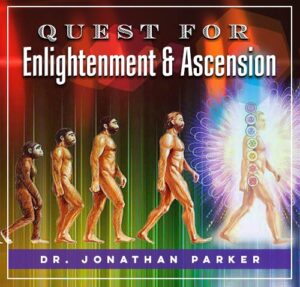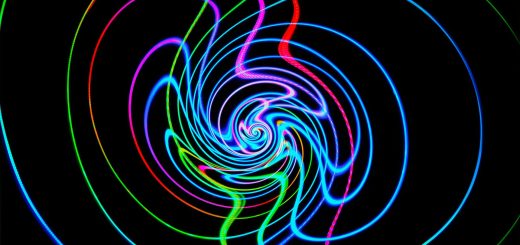Set: God of Chaos and Desert Storms

Before diving in, please note: This post is for informational purposes only. If you’d like to know more about how we approach topics, feel free to check out our friendly Disclaimer Page.
Hey there, amazing readers! 🖐️ Just a quick note: yes, we know there are a lot of ads here. Trust us, we get it—it’s not the prettiest look, but they help us keep this blog alive and kicking. Those pesky little ads cover the costs of all the behind-the-scenes magic, from hosting and tech stuff to creating content we hope you’ll love.
We’re committed to delivering quality posts, and your support (even just sticking around despite the ads) means everything to us. So, bear with us, and thanks for helping us keep the good vibes rolling. Now, on to the fun stuff! 😉
TRANSLATE BUTTON AT THE END OF THE ARTICLE
Overview
Set, also known as Seth, is a prominent and intriguing deity in ancient Egyptian mythology.
Revered as the god of chaos and desert storms, Set holds a significant role in the pantheon of gods worshipped by the ancient Egyptians.
This article delves into the origins, mythology, symbolism, representations, and associations of Set.
It explores Set’s role in ancient Egyptian religion, his iconography in art, his chaotic nature, and his connections to desert storms and natural disasters.
Furthermore, it examines Set’s relationships with other Egyptian gods, his worship and rituals in ancient Egypt, and his enduring legacy and influence in modern times.
The Set: God of Chaos and Desert Storms
Set, also spelled Seth, is an enigmatic deity in ancient Egyptian mythology.
He is widely recognized as the god of chaos and desert storms, representing the chaotic forces that exist in the world.
Set is often depicted as a composite creature with the body of a human and the head of an unknown animal, possibly a fantastical creature or even a donkey.
This unique combination of human and animal attributes emphasizes Set’s unconventional and unpredictable nature.
Origins and Mythology of Set
The origins of Set’s mythology are ancient and somewhat complex.
Set is believed to have originated from the ancient Egyptian city of Ombos, where he was worshipped as a local deity.
Over time, his influence spread throughout Egypt, and he became a prominent figure in the national pantheon.
Set’s mythology is intertwined with the story of his conflict with his brother, Osiris, and his nephew, Horus.
According to the myth, Set murdered Osiris out of jealousy and sought to rule Egypt.
This sparked a fierce battle between Set and Horus for the throne, symbolizing the struggle between chaos and order.
Set’s Role in Ancient Egyptian Religion
In ancient Egyptian religion, Set played a multifaceted role.
While he was often associated with chaos and disturbance, Set was also seen as a protective deity who defended the sun god, Ra, from various threats.
Set’s association with chaos was not entirely negative; ancient Egyptians believed that chaos was a necessary force in maintaining balance and harmony in the world.
Thus, Set’s presence in the pantheon added a necessary counterbalance to the more benevolent gods.
Symbolism and Representations of Set
Set’s symbolism and representations are rich in meaning and significance.
He is often depicted with a distinctive, long and curved snout, which is believed to resemble the trunk of an elephant or the snout of a hippopotamus.
This unique feature embodies the untamed and wild aspects of Set’s character.
Additionally, Set is frequently depicted holding a was scepter, a symbol of power and authority in ancient Egyptian culture.
The was scepter signifies Set’s role as a powerful and influential deity.
Set’s Iconography and Depictions in Art
In ancient Egyptian art, Set’s depictions varied over time.
Early representations of Set show him as a fierce and intimidating deity with a muscular physique.
As time went on, however, Set’s image became more restrained and less imposing.
Some artwork portrays Set with a forked tail, a prominent symbol of his chaotic nature.
Additionally, Set is often depicted engaging in combat with other gods, such as Horus or Apep, the serpent of chaos.
These artistic representations emphasize Set’s role as a formidable and powerful deity.
Set as a Chaotic and Powerful Deity
Set’s chaotic nature is a central aspect of his character.
Explore the Path to Spirituality and Enlightenment – Start Here.
He is associated with storms, disorder, and unpredictable behavior.
Set’s chaotic tendencies are believed to manifest in the natural world through desert storms, floods, and other turbulent phenomena.
Despite his chaotic nature, Set is also revered as a powerful deity who possesses great strength and influence.
This duality highlights the complex and nuanced nature of Set’s character within the ancient Egyptian pantheon.
Set’s Association with Desert Storms
One of Set’s most prominent associations is with desert storms.
In ancient Egypt, the desert was a formidable and dangerous place, characterized by its harsh and unpredictable climate.
Set came to be seen as the god responsible for these storms, unleashing his power and causing chaos in the form of sandstorms, thunderstorms, and lightning.
Ancient Egyptians believed that by appeasing Set through rituals and offerings, they could mitigate the destructive forces of the desert storms and protect their communities.
Set’s Connections to Natural Disasters
Set’s association with chaos extends beyond desert storms to encompass natural disasters more broadly.
Ancient Egyptians believed that Set had the power to cause earthquakes, floods, and other calamities.
These natural disasters were seen as the result of Set’s unpredictable and volatile nature.
Priests and worshippers sought to appease Set through rituals and offerings to prevent or mitigate the destructive impact of these disasters.
Set’s connection to natural disasters highlights the ancient Egyptians’ understanding of the inherent chaos and unpredictability of the natural world.
Set’s Role in Egyptian Cosmology
In Egyptian cosmology, Set played a crucial role.
He represented the chaotic and destructive forces that existed alongside the order and harmony maintained by the other gods.
Set’s constant battle with Horus, the god of kingship and order, symbolized the eternal struggle between chaos and stability.
This conflict was seen as an essential aspect of Egyptian cosmology, ensuring the balance and continuity of the world.
Set’s role as a disruptive force within the cosmological framework further emphasized the significance of his presence in ancient Egyptian mythology.
Set’s Relationships with Other Egyptian Gods
Set’s relationships with other Egyptian gods were complex and often marked by conflict.
His most notable adversaries were his brother Osiris and his nephew Horus.
Set’s murder of Osiris and subsequent battles with Horus symbolized the struggle between chaos and order, with Horus representing the forces of stability and Set representing chaos.
Despite these conflicts, Set also had connections with other deities.
For example, Set was often depicted as a companion to the sun god, Ra, protecting him from the serpent of chaos, Apep.
These relationships demonstrate the intricate web of alliances and rivalries within the Egyptian pantheon.
Set’s Worship and Rituals in Ancient Egypt
Set’s worship and rituals in ancient Egypt varied over time and across different regions.
Worshippers sought to appease Set through offerings, prayers, and rituals, particularly during times of natural disasters or when they deemed his chaotic influence to be particularly potent.
Some rituals involved the symbolic slaying of Set’s enemies, manifesting in effigies or symbolic representations.
Temples dedicated to Set were established throughout Egypt, with one of the most significant being the temple at Ombos, his presumed birthplace.
Set’s Legacy and Influence in Modern Times
Set’s legacy and influence continue to resonate in modern times.
While the worship of ancient Egyptian gods has waned, Set’s captivating nature as a chaotic deity has inspired various interpretations and adaptations in popular culture.
In modern mythology and fiction, Set is often portrayed as a powerful and malevolent figure associated with darkness, chaos, and the supernatural.
Set’s enduring presence in popular culture reflects the timeless fascination with his enigmatic character and the enduring significance of ancient Egyptian mythology.
Conclusion
Set, the god of chaos and desert storms, occupies a unique and powerful role in ancient Egyptian mythology.
From his origins in the city of Ombos to his complex relationships with other gods, Set’s mythology is rich in symbolism and meaning.
His association with chaos, desert storms, and natural disasters highlights the ancient Egyptians’ recognition of the inherent unpredictability of the world.
Set’s legacy endures in modern times, inspiring fascination and intrigue as a figure of chaos and power.
Through his enduring presence in art, literature, and popular culture, Set continues to captivate and provoke contemplation of the delicate balance between chaos and order in the human experience.

The Enlightenment Journey is a remarkable collection of writings authored by a distinguished group of experts in the fields of spirituality, new age, and esoteric knowledge.
This anthology features a diverse assembly of well-experienced authors who bring their profound insights and credible perspectives to the forefront.
Each contributor possesses a wealth of knowledge and wisdom, making them authorities in their respective domains.
Together, they offer readers a transformative journey into the realms of spiritual growth, self-discovery, and esoteric enlightenment.
The Enlightenment Journey is a testament to the collective expertise of these luminaries, providing readers with a rich tapestry of ideas and information to illuminate their spiritual path.
Our Diverse Expertise 🌟
While our primary focus is on spirituality and esotericism, we are equally passionate about exploring a wide range of other topics and niches 🌍📚. Our experienced team is dedicated to delivering high-quality, informative content across various subjects ✨.
To ensure we provide the most accurate and valuable insights, we collaborate with trusted experts in their respective domains 🧑🏫👩🏫. This allows us to offer well-rounded perspectives and knowledge to our readers.
Our blog originally focused on spirituality and metaphysics, but we’ve since expanded to cover a wide range of niches. Don’t worry—we continue to publish a lot of articles on spirituality! Frequently visit our blog to explore our diverse content and stay tuned for more insightful reads.










